Upgrading the Teso J-10 or iiView M1Touch
Upgrading a windows-based tablet was easy, showing how limited early iPads were
- Adding more memory provides an excuse to look inside the THD PX1
- SSD, wireless and other upgrades possible
- Could be an amusing thing to hack in 2020 – if you can find one
As a pretty neat UMPC, the Teso J-10 (aka iiView M1Touch and also sold as a “Windows 7 Tablet” by Tablet Store UK) is already well equipped for most purposes. Most of the time, people want to add bluetooth, 3G and so forth; those are already present. However, it’s interesting to get a look inside and see how the J-10 is assembled.
The J-10 casing is really quite clever; unlike most tablet machines it’s built along good, solid OEM practises and as such, is easy to open with accessible components.
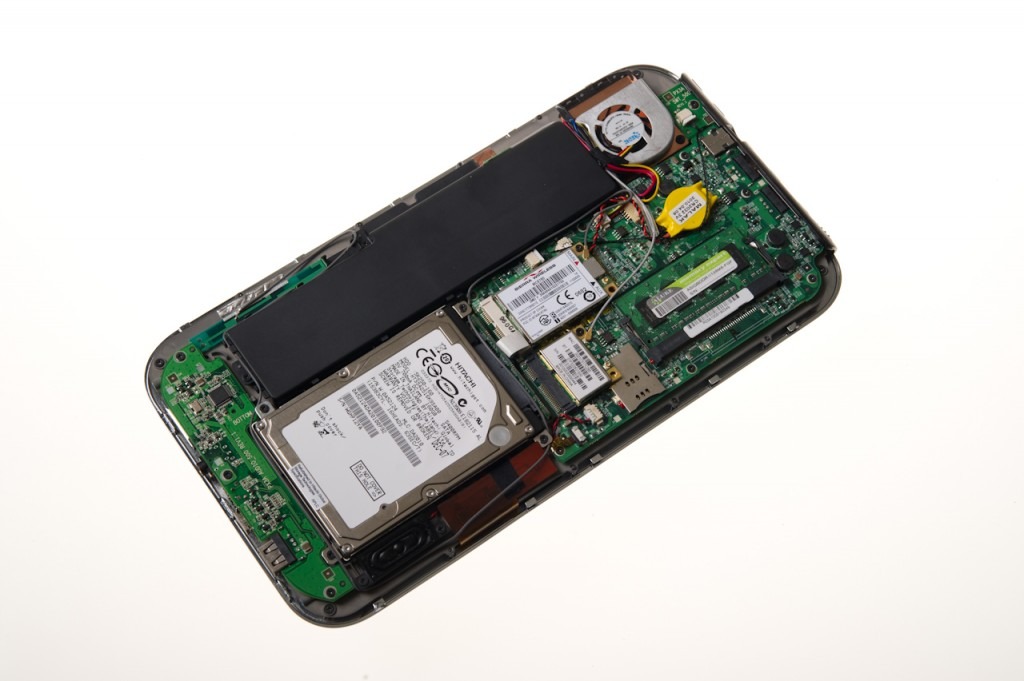
First, shut down the computer (do it from the start menu, don’t trust the power switch in case you have it set to standby). Remove your SIM card. The two screws on the end simply undo – they’re initially held with threadlock, so may be tight – make sure you use the right screwdriver (mine is marked 0x50, I’ll see how that relates to standard Philips sizes and update but if you can’t figure out what the right size is, maybe stop here).
Place the case with the screw holes facing away from you and slide the back away from the fixed port panel. Once there is a reasonable gap, the case simply lifts off. If it won’t slide, check you removed the SIM first.
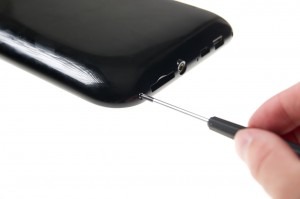
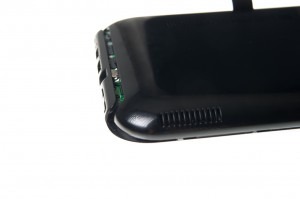
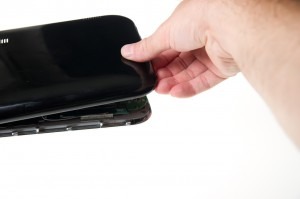
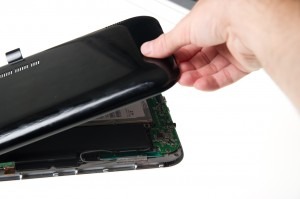
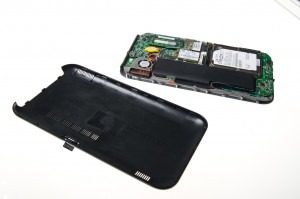
Once open, you have access to the battery, the SATA 2.5″ hard disc (it appears to have sufficient height to take a 500GB drive), the memory (200 pin DDR2 SO-DIMM; same as iMac 2.16GHz and pre Santa-Rosa Macbooks amongst many, many others) and the two Mini PCI-E slots – which in this model are populated with a Sierra MC8780 Aircard for 3G Wireless (it also, in some variants, supports GPS) and a generic WiFi and Bluetooth card. The WiFi antenna is near the fan, the 3G antenna is near the battery.
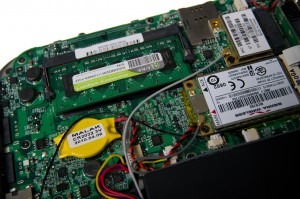
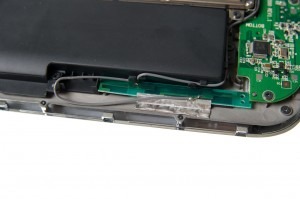
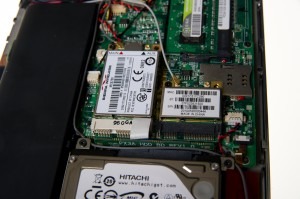
Upgrading from the included 1GB memory to 2GB made no difference to the overall performance index, but saw Lightroom load considerably faster and the memory performance increase from 4.5 to 4.6.
The J-10 is based around a metal chassis, forming the centre of a sandwich with the LCD, chrome bezel and front panel on one side, and the boards and battery on the opposite site.
With the exception of a few smaller components, the component quality is good – the antenna PCBs are a bit thin, and are stuck down (in the case of the WiFi antenna, glued to the 3000mAh battery).










Would it be possible to put a better battery in the device? Seems like the only real negative.
The battery is a standard cell type in a custom housing – so in theory, you could build a better battery. I’m just reviewing an SSD version (now available from The Tablet Store; they’re offering SSD and 2GB upgrades now) which definitely helps with heat and battery life, though it’s still relatively short as it is on any netbook of this spec with a 3100mAh battery. Most models ship with batteries that size at the low-cost end.
It’s possible to get external power sources for it.
Hey RichardK, thanks for writing these informative reviews.
I’ve bought a similar tablet, but with a different model name, JK01-TT. Everything looks similar, down to the design of the casing.
The seller that I bought this from claimed that it has GPS and Bluetooth in it, but I can’t seem to get those features to be detected by Windows. The built-in 3G signal is also very weak, it can occasionally detect 3G signals but when I attempt to connect to one, it gets disconnected immediately. I have no trouble connecting to 3G when I’m using a USB 3G modem.
Also, the WiFi signal becomes erratic when I’m only 1 wall away (about 2 meters away) from my wireless router. My phone and laptops have no trouble connecting to the router at the same location. This has led me to wonder if the mini PCI-E cards connections are loose? I’ve emailed the seller about this, and I’m also considering to open up the tablet to inspect those mini PCI-E cards. Do you think I should open it up and try to tighten the mini PCI-E cards? Or could it be hardware failure?
The GPS is part of the 3G modem and MAY not work; there seems to be something preventing the system from getting a fix, but try NMEA monitor on it – look in your “Devices” in the hardware control panel to see where the GPS port is. You should get output, but might not get a satellite fix; you need to be outside and it can take several minutes to download the GPS almanac that allows it to work out where the signals are coming from (essentially). The bluetooth, assuming the same card, is on the WiFi and may need an extra utility to enable it.
The card connections are unlikely to be loose, but you may have poor antennas. Sony PSP antennas are cheap and small, easy to find on eBay, so might fit in the casing; there’s a socket for a second antenna for the 3G card and the WiFi/Bluetooth card but you’ll need to find somewhere to locate it.
I had the same reception as my phones with the Sierra Wireless card, no issues there to speak of.
I was able to enable the GPS feature on my Sierra Wireless MC8781 (I finally dared myself to open up the tablet’s casing) by updating the firmware, but it couldn’t detect any satellites to get a fix. I have purchased a set of GPS/3G/WWAN antennas from eBay, hopefully that will help with the abysmal 3G and GPS reception.
As for the WiFi connectivity issues, I’ve fixed that issue by reverting to an older driver. That was quite peculiar.